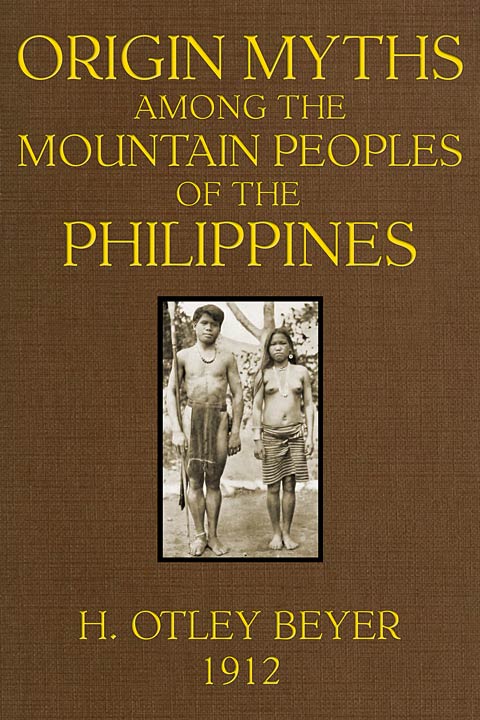Origin Myths among the Mountain Peoples of thePhilippines1
(From the Division of Ethnology, Bureau ofScience, Manila, P. I.)
Four plates
Beliefs as to the origin of the earth, and of the men, animals,plants, and various topographical features found in it, seem to survivewith greater persistence than any other trait of primitive culture.These beliefs lie at the base of nearly all religions, and the myths inwhich the beliefs are preserved are the foundation of literature. Thepreservation and study of origin myths is, therefore, of muchimportance in the reconstruction of the history of mankind which is thechief aim of anthropology.
The peoples of the Philippines have a rich and varied mythology asyet but little explored, but which will one day command much attention.Among the Christianized peoples of the plains the myths are preservedchiefly as folk tales, but in the mountains their recitation andpreservation is a real and living part of the daily religious life ofthe people. Very few of these myths are written; the great majority ofthem are preserved by oral tradition only.
Until recent years, it has been believed that all ancient recordswritten in the syllabic alphabets which the Filipinos possessed at thetime of the Spanish conquest had been lost. It is now known, however,that two of these alphabets are still in use, to a limited extent, bythe wild peoples of Palawan and Mindoro; and ancient manuscriptswritten in the old Bisaya alphabet have been lately discovered in acave in the Island of Negros. Many of these Negros manuscripts arewritten myths, and translations of them are shortly to be published.The Bisaya peoples, in general, have preserved their old pagan beliefsto a greater extent than have the other Christian Filipinos, and it isto be [86]hoped that the discovery of these manuscripts willstimulate further investigations.
Among the pagan mountain peoples, with which this paper will chieflydeal, there are no written myths except those which have been recordedby Europeans in modern times. Some of the myths are sung or chantedonly, while others are repeated in the form of stories. In nearly everycase, the repeating of the myths forms an important part of thereligious ceremonies of the people. Many different grades of cultureare represented among these mountain peoples, and we find acorrespondingly unequal development of their mythologies. All classesare represented: primitive, such as the beliefs of theMan͠gyans of Mindoro, the Tagbanwas of Palawan, and the Ilongotsof northern Luzon; mediocre, as the beliefs of the pagan tribesof Mindanao; and highly developed, such as the elaboratepolytheisms of the Ifugaos, Igorots, Kalingas, and the other peoples ofthe Mountain Province in Luzon.
Most of the myths and legends recorded here were collected by menwell acquainted with the dialect of the people from
